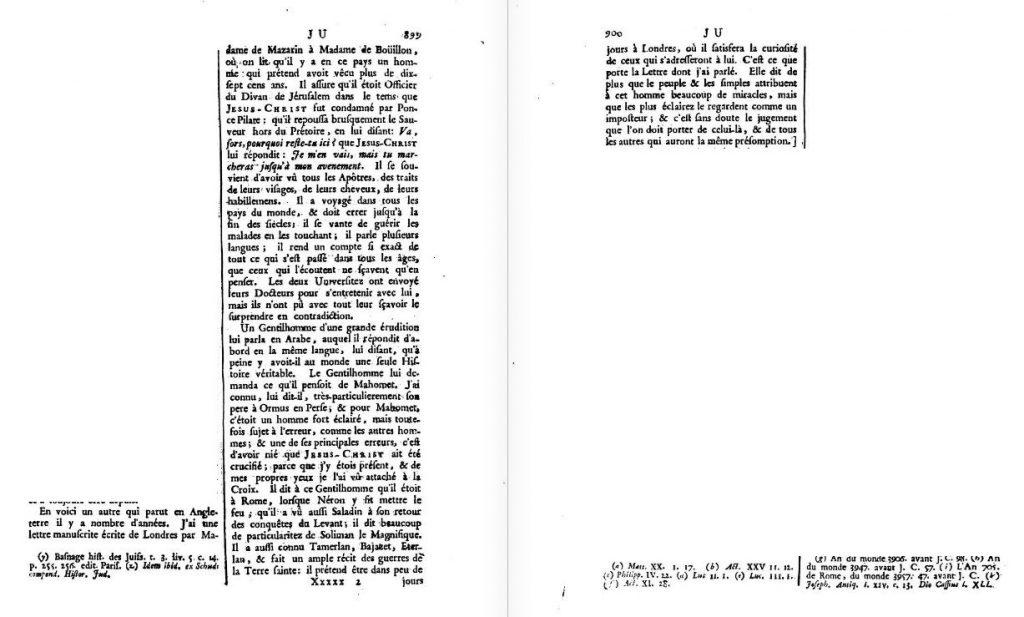Wandering Jew c. 1700 January 28, 2017
Author: Beach Combing | in : Modern , trackbackIn his Curious Myths of the Middle Ages Baring-Gould describes a Wandering Jew in England. This is his most interesting account of a modern encounter.
About the end of the seventeenth century or the beginning of the eighteenth, an impostor, calling himself the Wandering Jew, attracted attention in England, and was listened to by the ignorant, and despised by the educated. He, however, managed to thrust himself into the notice of the nobility, who, half in jest, half in curiosity, questioned him, and paid him as they might a juggler. He declared that he had been an officer of the Sanhedrim, and that he had struck Christ as he left the judgment hall of Pilate. He remembered all the Apostles, and described their personal appearance, their clothes, and their peculiarities. He spoke many languages, claimed the power of healing the sick, and asserted that he had travelled nearly all over the world. Those who heard him were perplexed by his familiarity with foreign tongues and places. Oxford and Cambridge sent professors to question him, and to discover the imposition, if any. An English nobleman conversed with him in Arabic. The mysterious stranger told his questioner in that language that historical works were not to be relied upon. And on being asked his opinion of Mahomet, he replied that he had been acquainted with the father of the prophet, and that he dwelt at Ormuz. As for Mahomet, he believed him to have been a man of intelligence; once when he heard the prophet deny that Christ was crucified, he answered abruptly by telling him he was a witness to the truth of that event. He related also that he was in Rome when Nero set it on fire ; he had known Saladin, Tamerlane, Bajazeth, Eterlane, and could give minute details of the history of the Crusades. Whether this wandering Jew was found out in London or not, we cannot tell, but he shortly after appeared in Denmark, thence travelled into Sweden, and vanished.
Baring-Gould’s source here was Augustin Calmet’s Dictionnaire Historique, Critique, Chronologique, Géographique de la Bible II, 899 (note Baring-Gould got the page wrong or had another edition, it is here corrected). Beach has included, at the top of this page the scanned version. Calmet’s book dates to 1730. Baring Gould’s summary seems a fair one. Note that Calmet was basing himself on a letter from a French resident, Madame de Mazarin. It would be interesting to look for an English source for this Wandering Jew: surely one exists if the man mixed with the aristocracy? Perhaps the one bit of extra information that Baring-Gould gives, the man’s journey to Scandinavia, comes from a British account.
Beach has used the immortals tab here: because the references to Mohamed, Saladin, Tamerlane bring this particularly Wandering Jew into that category.



